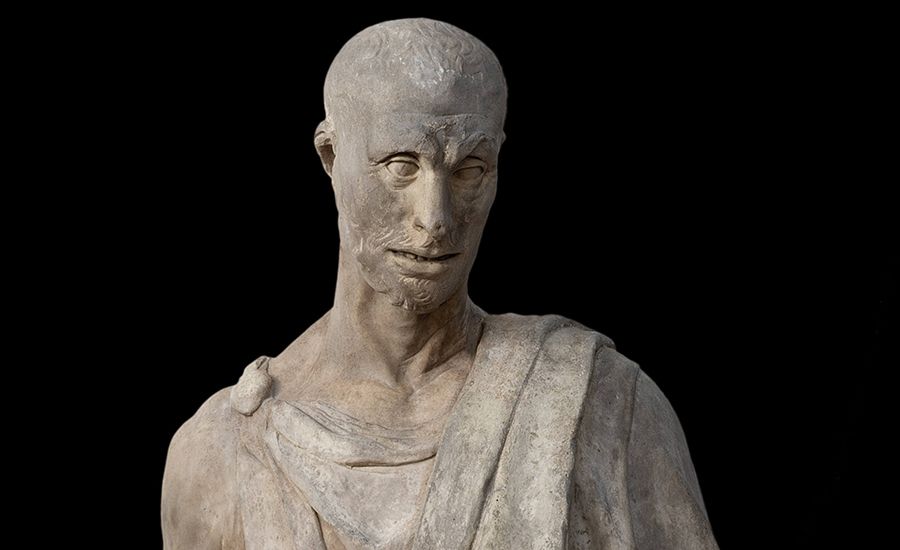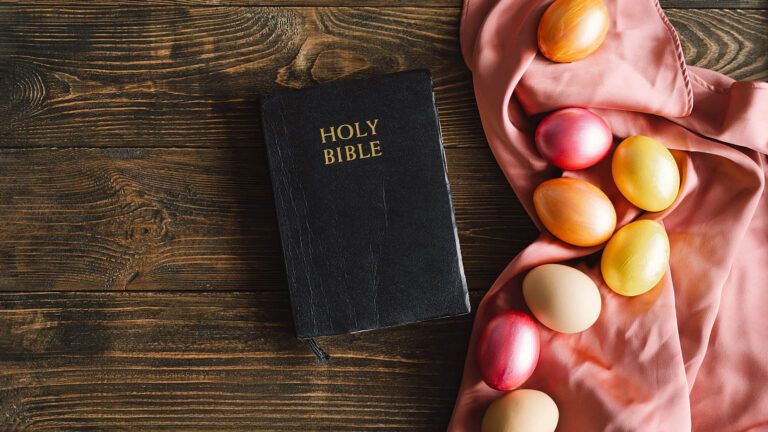What did Habakkuk look like? What about the prophet Elisha or John the Evangelist?
I found myself asking these questions as I gazed at some of the most remarkable and beautiful statues from the Renaissance. They’d been flown over from Florence, Italy, and were gazing back at me from white pedestals at the Museum of Biblical Art (MOBIA) in New York City.
First of all, I didn’t expect to see the real sculptures Donatello had carved some 600 years ago for the great cathedral in Florence, the Duomo. I figured they were too precious, too heavy, too impossible to move.
But here they were, only a few feet from my eyes, inches from my hands, visiting New York from their home at the Museum of the Works of the Duomo.
“That man looks like Moses,” I told Timothy Verdon, the curator of this exhibit and the director of the museum. We were gazing at Donatello’s statue of John the Evangelist. He had a great flowing beard and a book in one hand and his fingers in the other hand looking like he’d just put down his quill pen.
“It was probably the inspiration for the Moses that Michelangelo carved years later,” Timothy said. What Donatello was hoping to convey was the thoughtfulness, the visionary quality of the Evangelist who, as tradition holds, also put down the last book of the Bible, Revelation.
His eyes look off in the distance, his brow furrowed as though he’s trying to comprehend the vision God has given him. He’s a figure of monumental power.
We moved on to another statue, a thin, balding man with a mantle over one shoulder. “For years he’s been identified as Habakkuk, but I’m not sure that’s right,” said Timothy. “If you’ll remember Habakkuk feeds Daniel in the lion’s den and is carried there by an angel who holds him by the hair.”
Truth to tell, I didn’t remember this passage from the Bible, could only recall the book Habakkuk wrote, but later discovered the episode of Habakkuk and Daniel is part of the Apocrypha, in the book Bel and the Dragon.
“This man is bald,” said Timothy. “That’s why I think it is Elisha. As you’ll remember, Elisha is mocked and teased in the Bible for being bald.”
Okay, this reference I was able to find. See 2 Kings 2:23.
“And notice the mantle, too,” Timothy continued. “The great prophet Elijah gives it to Elisha to show that he is meant to carry on his work.”
You get that detail first in 1 Kings 19:19 when Elisha leaves his plowing to follow Elijah. And then again when Elijah is carried up to heaven in the chariot, his mantle is left behind for Elisha (2 Kings 2:13).
“Elisha asks for twice the power of Elijah,” Timothy said, “and Elijah promises that if he sees him go up to heaven it will happen and it does.” This Elisha looks spiritually alert and insightful, meditative.
Timothy and I talked about how this art communicated to a largely illiterate populace. They couldn’t read the Bible but sculpture like this made it come alive. I could go to my concordance and look things up. They had their imagination and memory to depend on. And great artists like Donatello.
I thanked Timothy for the tour and for this once-in-a-lifetime to see some of the world’s greatest works of art up close. Each piece felt like a prayer.
The exhibit “Sculpture in the Age of Donatello” is at the Museum of Biblical Art in New York City through June 14.






